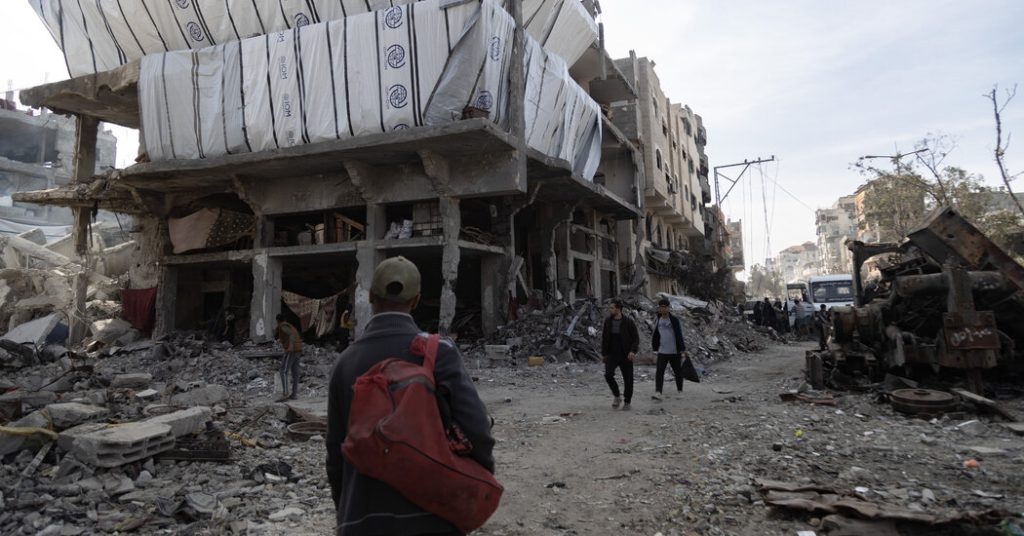Former President Trump’s proposition to relocate two million Palestinian residents from Gaza under American occupation sparked a maelstrom of reactions, ranging from enthusiastic support from the Israeli right to vehement condemnation from Palestinians and bewildered confusion from regional analysts. The sheer audacity of the plan led many to question its feasibility and speculate whether it was a genuine policy proposal or a strategic gambit in ongoing negotiations over Gaza’s future. The plan’s implications, if implemented, would be far-reaching and potentially disastrous, raising concerns about ethnic cleansing, regional instability, and the violation of international law.
For the Israeli right wing, particularly settler leaders, Trump’s proposal represented a paradigm shift. It offered a potential solution to the perceived threat from Gaza without the necessity of establishing a Palestinian state, a long-standing sticking point in the Israeli-Palestinian conflict. Some envisioned the vacated land as an opportunity for Jewish settlement expansion, a long-held aspiration. However, the notion of relocating two million people was met with incredulity by others, including some within the Israeli political establishment, who saw it as impractical and potentially counterproductive.
From the Palestinian perspective, the plan was nothing short of catastrophic. It evoked the specter of mass displacement, reminiscent of the 1948 exodus, and was deemed a blatant act of ethnic cleansing. The prospect of forced relocation was met with resolute resistance, with Palestinians expressing a preference for living in the ruins of their homes rather than being uprooted from their ancestral lands. The proposal deeply exacerbated existing tensions and further eroded trust between Israelis and Palestinians.
International legal experts characterized forced deportation as a crime against humanity, highlighting the gravity of the proposed action. Historical precedents of large-scale population transfers, such as the partition of India, underscored the potential for long-lasting social and political upheaval, as well as immense human suffering. These examples served as cautionary tales, demonstrating the unintended consequences and inherent risks associated with such drastic measures.
Some analysts interpreted Trump’s unconventional proposal as a negotiating tactic rather than a serious policy intention. They viewed it as a calculated move to exert pressure on both Hamas and Arab leaders to compromise. By presenting an extreme scenario, Trump may have aimed to push Hamas to relinquish control of Gaza and incentivize Saudi Arabia to normalize relations with Israel, potentially at the expense of Palestinian statehood. This interpretation suggested that the proposal’s shock value was a deliberate strategy to reshape the dynamics of the negotiations.
The proposal had a complex impact on the Israeli political landscape. It provided a potential off-ramp for right-wing members of Netanyahu’s coalition who had threatened to dissolve the government if Hamas remained in power after the war. The prospect of eventual Palestinian relocation from Gaza, however fanciful, offered a justification for extending the ceasefire. Conversely, within the Israeli mainstream, there was apprehension that such a radical proposal could provoke Hamas into terminating the truce prematurely. Furthermore, concerns were raised about the potential for regional instability if neighboring countries were forced to absorb a large influx of displaced Palestinians.
The plan also sparked debate about the broader direction of Israeli policy under Netanyahu and Trump. Both leaders expressed support for annexing the West Bank, a move that raised concerns about the future of Israeli democracy. Granting citizenship and voting rights to Palestinians in the annexed territories would alter the demographic balance of the country, while denying these rights would undermine democratic principles. This dilemma presented a fundamental challenge to Israel’s identity as both a Jewish and democratic state.
Ultimately, Trump’s proposal served as a stark reminder of the complexities and sensitivities surrounding the Israeli-Palestinian conflict. Whether a genuine policy proposal or a negotiating ploy, it ignited intense debate and underscored the precariousness of the situation. The plan’s long-term impact remained uncertain, but its immediate effect was to further polarize opinions and exacerbate existing tensions in a region already fraught with conflict.











